The Supreme Buddha
www.sundayobserver.lk
Siddartha Gautama is the founder of Buddhism. He is generally recognized by Buddhists as the Supreme Buddha -Sambuddha of our age. The exact time of his birth and death are uncertain.
 Most early 20th-century historians date his lifetime from 563 BCE to 483 BCE. More recently at a specialist symposium on this question, the majority of those scholars who presented definite opinions gave dates within 20 years either side of 400 BCE for the Buddha’s death, with others supporting earlier or later dates.
Most early 20th-century historians date his lifetime from 563 BCE to 483 BCE. More recently at a specialist symposium on this question, the majority of those scholars who presented definite opinions gave dates within 20 years either side of 400 BCE for the Buddha’s death, with others supporting earlier or later dates.
Gautama, also known as Sakyamuni -“sage of the Shakyas”, is the key figure in Buddhism, and accounts of his life, discourses, and monastic rules were said to have been summarized after his demise and memorized by the Sangha.
Passed down by oral tradition, the Tripitaka, the collection of teachings attributed to Gautama by the Theravada, was committed to writing about 400 years later.
“Scholars are increasingly reluctant to make unqualified claims about the historical facts of the Buddha’s life and teachings.”
Conception and birth
Siddhartha was born in Lumbini and raised in the small kingdom or principality of Kapilavastu. Culturally, these can be considered part of the broader region of Ancient India. His father was King Suddhodana, the chief of the Shakya nation, one of several ancient tribes in the growing state of Kosala; Gautama was the family name.
As was the Shakya tradition, when his mother Queen Maya fell pregnant, she returned to her father’s kingdom for the confinement, but after leaving Kapilvastu, she gave birth along the way at Lumbini in a garden beneath a Sal tree.
The day of the Buddha’s birth is widely celebrated in Theravada countries as Vesak. Various sources hold that the Buddha’s mother died at his birth, a few days or seven days later. The infant was given the name Siddhartha, meaning “he who achieves his aim”.
During the birth celebrations, the hermit seer Asita journeyed from his mountain abode and announced that the child would either become a Universal Monarch (chakravartin) or a great holy man.
This occurred after Siddhartha placed his feet in ascetic Asita’s hair and the ascetic examined the birthmarks. Suddhodarna held a naming ceremony on the fifth day, and invited eight brahmin scholars to read the future.
All gave a dual prediction that the baby would either become a Universal Monarch or a great holy man. Kondagnna, the youngest of the team and later to be the first Arhant, was the only one who unequivocally predicted that Siddhartha would become a Buddha.
Early life and marriage
Siddhartha, destined to a luxurious life as a prince, had three palaces (for seasonal occupation) especially built for him. His father, King Suddhodana, wishing for Siddhartha to be a Universal Monarch, shielded his son from religious teachings or knowledge of human suffering.
 Siddhartha was brought up by his mother’s younger sister, Maha Pajapati. As the boy reached the age of 16, his father arranged marriage to Yasodhara , a cousin of the same age. In time, she gave birth to a son, Rahula. Siddhartha spent 29 years as a Prince in Kapilavastu.
Siddhartha was brought up by his mother’s younger sister, Maha Pajapati. As the boy reached the age of 16, his father arranged marriage to Yasodhara , a cousin of the same age. In time, she gave birth to a son, Rahula. Siddhartha spent 29 years as a Prince in Kapilavastu.
Although his father ensured that Siddhartha was provided with everything he could want or need, Siddhartha felt that material wealth was not the ultimate goal of life.
The Great Renunciation
At the age of 29, Siddhartha left his palace in order to meet his subjects. Despite his father’s effort to remove the sick, aged and suffering from the public view, Siddhartha was said to have seen an old man.
Disturbed by this, when told by his charioteer Channa that all people would eventually grow old, the prince went on further trips where he encountered, variously a diseased man, a decaying corpse, and an ascetic.
Deeply depressed by these sights, he sought to overcome old age, illness, and death by living the life of an ascetic.
 Siddhartha renounced his palace, accompanied by Channa aboard his horse Kanthaka, leaving behind this royal life to become a mendicant. It is said that the horse’s hooves were muffled by the gods” to prevent guards from knowing the Bodhisatta’s departure. This event is known as “The Great Renunciation”.
Siddhartha renounced his palace, accompanied by Channa aboard his horse Kanthaka, leaving behind this royal life to become a mendicant. It is said that the horse’s hooves were muffled by the gods” to prevent guards from knowing the Bodhisatta’s departure. This event is known as “The Great Renunciation”.
Siddhartha initially went to Rajagaha and began his ascetic life by begging for alms in the street. Having been recognised by the men of King Bimbisara, Bimbisara offered him the throne after hearing of Siddhartha’s quest. Siddhartha rejected the offer, but promised to visit his kingdom of Magadha first, upon attaining enlightenment.
Siddhartha left Rajagaha and practiced under two hermit teachers. After mastering the teachings of Alara Kalama, Siddhartha was asked by Kalama to succeed him, but moved on after being unsatisfied with his practices.
He then became a student of Uddaka Ramaputta, but although he achieved high levels of meditative consciousness and was asked to succeed Ramaputta, he was still not satisfied with his path, and moved on.
Siddhartha and a group of five companions led by Kondagnna then set out to take their austerities even further. They tried to find enlightenment through near total deprivation of worldly goods, including food, practising self-mortification.
After nearly starving himself to death by restricting his food intake to around a leaf or nut per day, he collapsed in a river while bathing and almost drowned. Siddhartha began to reconsider his path.
Then, he remembered a moment in childhood in which he had been watching his father start the season’s plowing, and he had fallen into a naturally concentrated and focused state that was blissful and refreshing, the Anapana-sathi meditation (awareness of breathing in and out).
The Great Enlightenment
After asceticism and concentrating on meditation and Anapana-sati , Siddhartha is said to have discovered the Middle path ,away from the extremes of self-indulgence and self-mortification.
He accepted a little milk and rice pudding from a village girl named Sujata, who wrongly believed him to be the spirit that had granted her a wish, such was his emaciated appearance.
Then, sitting under a pipal tree, now known as the Bo tree in Bodh Gaya, he vowed never to get up until he had found the Truth. Kondagnna and the other four companions, believing that he had abandoned his search and become undisciplined, left. After 49 days meditating, at the age of 35, he attained Enlightenment.
According to some traditions, this occurred approximately in the fifth lunar month, and according to others in the twelfth. Gautama, from then on, was known as the Buddha or “Awakened One.” Buddha is also sometimes translated as “The Enlightened One.” Often, he is referred to in Buddhism as Shakyamuni Buddha or “The Awakened One of the Shakya Clan.”
At this point, he realized complete awakening and insight into the nature and cause of human suffering which was ignorance, along with steps necessary to eliminate it. These truths were then categorized into the Four Noble Truths; the state of supreme liberation-possible for any being-was called Nirvana. He then came to possess the Nine Characteristics, which are said to belong to every Buddha.
According to one of the stories belongs to Samyutta Nikaya, a scripture found in the Pali and other canons, immediately after his Enlightenment, the Buddha was wondering whether or not he should teach the Dhamma to human beings.
He was concerned that, as human beings were overpowered by greed, hatred and delusion, they would not be able to see the true Dhamma, which was subtle, deep and hard to understand.
A divine spirit, Brahma interceded and asked if he would teach Dhamma to the world, as there will be those who will understand the Dhamma”. With his great compassion to all beings in the universe, the Buddha agreed to become a teacher.
Formation of the order of Sangha
After becoming enlightened, two merchants whom the Buddha met, named Tapussa and Bhallika became the first lay disciples. They are given some hairs from the Buddha’s head, which
are believed to now be enshrined in the Shwe Dagon Temple in Rangoon, Burma. The Buddha intended to visit Asita, and his former teachers, Alara Kalama and Uddaka Ramaputta to explain his findings, but they had already passed away.
The Buddha thus journeyed to Deer Park near Varanasi (Benares) in northern India, he set in motion the Wheel of Dharma by delivering his first sermon to the group of five companions with whom he had previously sought Enlightenment.
They, together with the Buddha, formed the first order of Sangha, the company of Buddhist monks, and hence, the first formation of Triple Gems (Buddha, Dhamma and Sangha) was completed, with Kondagnna becoming the first stream-enterer.
All five soon become Arahants, and with the conversion of Yasa and fifty four of his friends, the number of Arahants swelled to 60 within the first two months. The conversion of the three Kassapa brothers and their 200, 300 and 500 disciples swelled the Sangha over 1000, and they were dispatched to explain the dhamma to the populace.
Ministry
For the remaining 45 years of his life, the Buddha is said to have travelled in the Gangetic Plain, in what is now Uttar Pradesh, Bihar and southern Nepal, teaching his doctrine and discipline to an extremely diverse range of people- from nobles to outcaste street sweepers, mass murderers such as Angulimala and cannibals such as Alavaka. This extended to many adherents of rival philosophies and religions.
The Buddha founded the order of Buddhist monks and nuns - the Sangha to continue the dispensation after his Parinibbana- the Great Demise and made thousands of converts. His religion was open to all races and classes and had no caste structure. He was also subject to attack from opposition religious groups, including attempted murders and framing.
The sangha travelled from
place to place in India, expounding the dhamma. This occurred throughout the year, except during the four months of the “Vassana” rainy season. Due to the heavy floods travelling was difficult and ascetics of all religions in that time did not travel, since it was more difficult to do so without stepping on submerged animal life, unwittingly killing them. During this period, the Sangha would retreat to a monastery, public park or a forest and people would come to them.
The first “Vassana” was spent at Varanasi when the order of Sangha was first formed. After this, he travelled to Rajagaha, the capital of Magadha to visit King Bimbisara, in accordance with his promise after Enlightenment. It was during this visit that Sariputta and Mahamoggallana were converted by Assaji, one of the first five disciples. They were to become the Buddha’s two foremost disciples.
The Buddha then spent the next three seasons at Veluvana Bamboo Grove monastery in Rajagaha, the capital of Magadha. The monastery, which was of a moderate distance from the city centre was donated by king Bimbisara.
Upon hearing of the Enlightenment, Suddhodana dispatched royal delegations to ask the Buddha to return to Kapilavastu. Nine delegations were sent in all, but the delegates joined the Sangha and became Arahants. Neglecting worldly matters they did not convey their message.
The tenth delegation lead by Kaludayi, a childhood friend, resulted in the message being successfully conveyed as well as becoming an Arahant. Since it was not the “Vassana”, the Buddha agreed, and two years after his Enlightenment, took a two month journey to Kapilavastu on foot, preaching the dhamma along the way.
Upon his return, the royal palace had prepared the midday meal, but since no specific invitation had come, the Sangha went for an alms round in Kapilavastu. Hearing this, Suddhodana hastened to approach the Buddha, stating “Ours is the warrior lineage of Mahamassata, and not a single warrior has gone seeking alms”, to which the Buddha replied,
“That is not the custom of your royal lineage. But it is the custom of my Buddha lineage. Several thousands of Buddhas have gone by seeking alms “
Suddhodana invited the sangha back to the royal palace for the meal, followed by a dhamma deliverance, after which he became a Sotapanna.
During the visit, many members of the royal family joined the Sangha. His cousins Ananda and Anuruddha were to become two of his five Chief Disciples. His son Rahula also joined the sangha at the age of seven, and was one of the ten Chief Disciples. His half-brother Nanda also joined the order of Sangha and became an Arahant. Another cousin Devadatta also became a monk although he later became an enemy and tried to kill the Buddha on multiple occasions.
Of his disciples, Sariputta, Mahamoggallana, Mahakasyapa, Ananda and Anuruddha comprised the five Chief Disciples. His ten foremost disciples were completed by the quintet of Upali, Subhoti, Rahula, Mahakaccana and Punna.
In the fifth “vassana”, the Buddha was staying at Mahavana near Vesali.
Hearing of the impending death of Suddhodana, the Buddha went to his father and preached the dhamma, and Suddhodana became an Arahant prior to death. The death and cremation led to the formation of the order of nuns.
Buddhist texts record that he was reluctant to ordain women as nuns. His foster mother Maha Pajapati approached him asking to join the order of Sangha, but the Buddha refused, and began the journey from Kapilavastu back to Rajagaha. Maha Pajapati was so intent on renouncing the world that she lead a group of royal Sakyan and Koliyan ladies, following the Sangha to Rajagaha.
The Buddha eventually accepted them five years after the formation of the Sangha on the grounds that their capacity for enlightenment was equal to that of men, but he gave them certain additional rules - Vinaya to follow. This occurred after Ananda interceded on their behalf. Yasodhara too became a nun, with both becoming Arahants.
During his ministry, Devadatta (who was not an Arahant) frequently attempted to undermine the Buddha. At one point Devadatta asked the Buddha to stand aside to let him lead the Sangha.
The Buddha declined, and stated that Devadatta’s actions did not reflect on the Triple Gem, but on him alone. Devadatta conspired with Prince Ajatasattu, son of king Bimbisara, so that they would kill and usurp the Buddha and Bimbisara respectively.
Devadatta attempted three times to kill the Buddha. The first attempt involved the hiring of a group of archers, whom upon meeting the Buddha became disciples.
A second attempt followed when Devadatta attempted to roll a large boulder down a hill. It hit another rock and splintered, only grazing the Buddha in the foot. A final attempt by plying an elephant with alcohol and setting it loose again failed.
Failing this, Devadatta attempted to cause a schism in the Sangha, by proposing extra restrictions on the Vinaya. When the Buddha declined, Devadatta started a breakaway order, criticising the Buddha’s laxity.
At first, he managed to convert some of the Bhikkhus, but Sariputta and Mahamoggallana expounded the dhamma to them and succeeded in winning them back. When the Buddha reached the age of 55, he made Ananda his chief attendant.
The Great Demise
According to the Mahaparinibbana Sutta of the Pali canon, at the age of 80, the Buddha announced that he would soon enter Parinirvana or the final deathless state abandoning the earthly body.
After this, the Buddha ate his last meal, which, according to different translations, was either a mushroom delicacy or soft pork, which he had received as an offering from a blacksmith named Cunda.
Falling violently ill, Buddha instructed his attendant Ananda to convince Cunda that the meal eaten at his place had nothing to do with his passing and that his meal would be a source of the greatest merit as it provided the last meal for a Buddha.
The Mahayana Vimalakirti Sutra explains, in Chapter 3, that the Buddha doesn’t really become ill or old but purposely presents such an appearance only to teach those born during the five defilements the impermanence and pain of defiled worlds and to strive for Nirvana.
“‘Reverend Ananda, the Tathagatas have the body of the Dhamma - not a body that is sustained by material food. The Tathagatas have a transcendental body that has transcended all mundane qualities.
There is no injury to the body of a Tathagata, as it is rid of all defilements. The body of a Tathagata is uncompounded and free of all formative activity. Reverend Ananda, to believe there can be illness in such a body is irrational and unseemly!’ Nevertheless, since the Buddha has appeared during the time of the five corruptions, he disciplines living beings by acting lawfully and humble.”
Ananda protested Buddha’s decision to enter Parinirvana in the abandoned jungles of Kusinara of the Mallas. Buddha, however, reminded Ananda how Kusinara was a land once ruled by a righteous wheel-turning king that resounded with joy:
“Ananda, resounded unceasingly day and night with ten sounds - the trumpeting of elephants, the neighing of horses, the rattling of chariots, the beating of drums and tabours, music and song, cheers, the clapping of hands, and cries of “Eat, drink, and be merry!” “
Buddha then asked all the attendant Bhikshus to clarify any doubts or questions they had. They had no questions. He then finally entered Parinirvana. The Buddha’s final words were, “All composite things pass away. Strive for your own liberation with diligence.”
The Buddha’s body was cremated and the relics were placed in monuments or stupas, some of which are believed to have survived till present. For example, The Temple of the Tooth or “Dalada Maligawa” in Sri Lanka is the place where the relic of the right tooth of Buddha is kept at present.
According to the Pali historical chronicles of Sri Lanka, the Deepavamsa and Mahavamsa, the coronation of Asoka is 218 years after the death of Buddha. According to one Mahayana record in Chinese the coronation of Asoka is 116 years after the death of Buddha.
Therefore, the time of Buddha’s passing is either 486 BCE according to Theravada record or 383 BCE according to Mahayana record. However, the actual date traditionally accepted as the date of the Buddha’s death in Theravada countries is 544 or 543 BCE, because the reign of Asoka was traditionally reckoned to be about 60 years earlier than current estimates.
At his death, the Buddha told his disciples to follow no leader, but to follow his teachings (dhamma). However, at the First Buddhist Council, Mahakasyapa was held by the Sangha as their leader, with the two chief disciples Mahamoggallana and Sariputta having died before the Buddha.

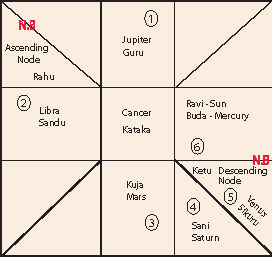
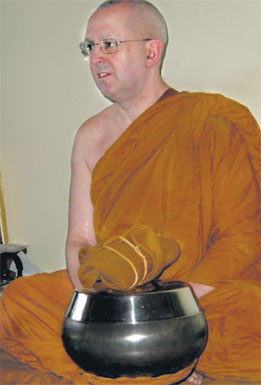
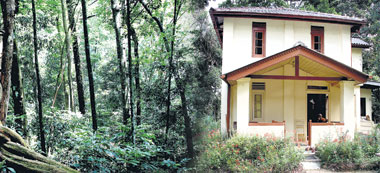
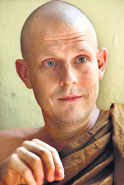
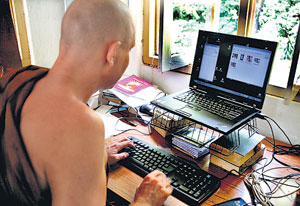



 As he was meditating under the Banyan tree the following morning (Vesak Full Moon Poya day), a rich land lady called Sujatha offered him a bowl of milk rice. Having had a bath on the bank of the river Neranjana, the Bodisatta consumed the milk rice after making 49 pellets. As he finished his meal he let the golden bowl float on the river making a solemn wish.
As he was meditating under the Banyan tree the following morning (Vesak Full Moon Poya day), a rich land lady called Sujatha offered him a bowl of milk rice. Having had a bath on the bank of the river Neranjana, the Bodisatta consumed the milk rice after making 49 pellets. As he finished his meal he let the golden bowl float on the river making a solemn wish. 
 Most early 20th-century historians date his lifetime from 563 BCE to 483 BCE. More recently at a specialist symposium on this question, the majority of those scholars who presented definite opinions gave dates within 20 years either side of 400 BCE for the Buddha’s death, with others supporting earlier or later dates.
Most early 20th-century historians date his lifetime from 563 BCE to 483 BCE. More recently at a specialist symposium on this question, the majority of those scholars who presented definite opinions gave dates within 20 years either side of 400 BCE for the Buddha’s death, with others supporting earlier or later dates.  Siddhartha was brought up by his mother’s younger sister, Maha Pajapati. As the boy reached the age of 16, his father arranged marriage to Yasodhara , a cousin of the same age. In time, she gave birth to a son, Rahula. Siddhartha spent 29 years as a Prince in Kapilavastu.
Siddhartha was brought up by his mother’s younger sister, Maha Pajapati. As the boy reached the age of 16, his father arranged marriage to Yasodhara , a cousin of the same age. In time, she gave birth to a son, Rahula. Siddhartha spent 29 years as a Prince in Kapilavastu.  Siddhartha renounced his palace, accompanied by Channa aboard his horse Kanthaka, leaving behind this royal life to become a mendicant. It is said that the horse’s hooves were muffled by the gods” to prevent guards from knowing the Bodhisatta’s departure. This event is known as “The Great Renunciation”.
Siddhartha renounced his palace, accompanied by Channa aboard his horse Kanthaka, leaving behind this royal life to become a mendicant. It is said that the horse’s hooves were muffled by the gods” to prevent guards from knowing the Bodhisatta’s departure. This event is known as “The Great Renunciation”. 